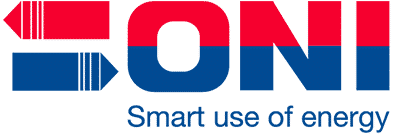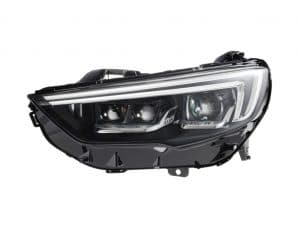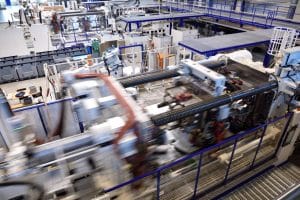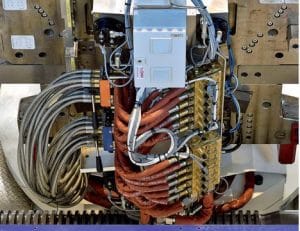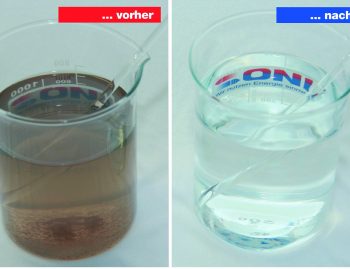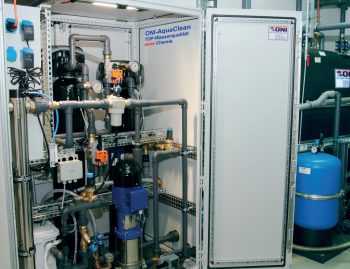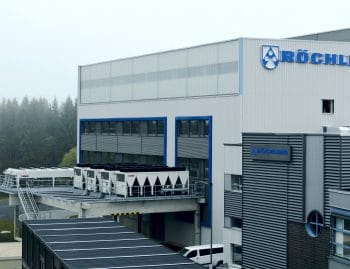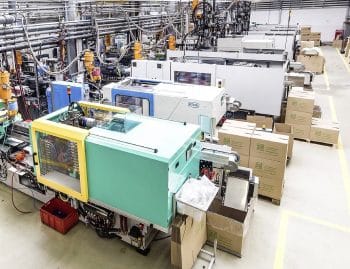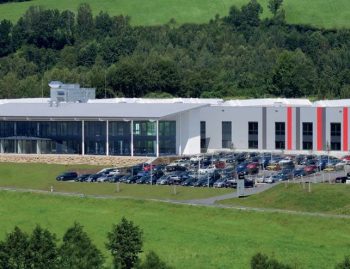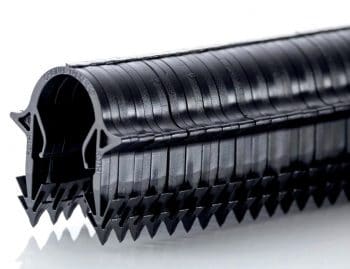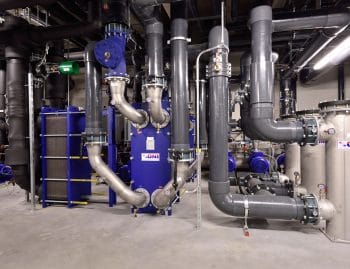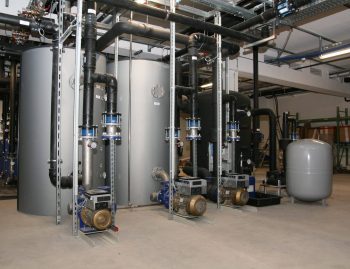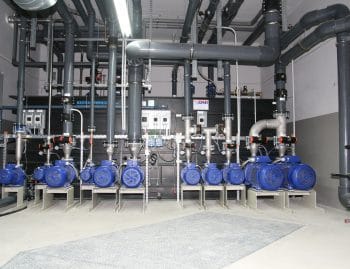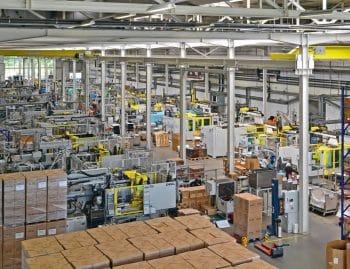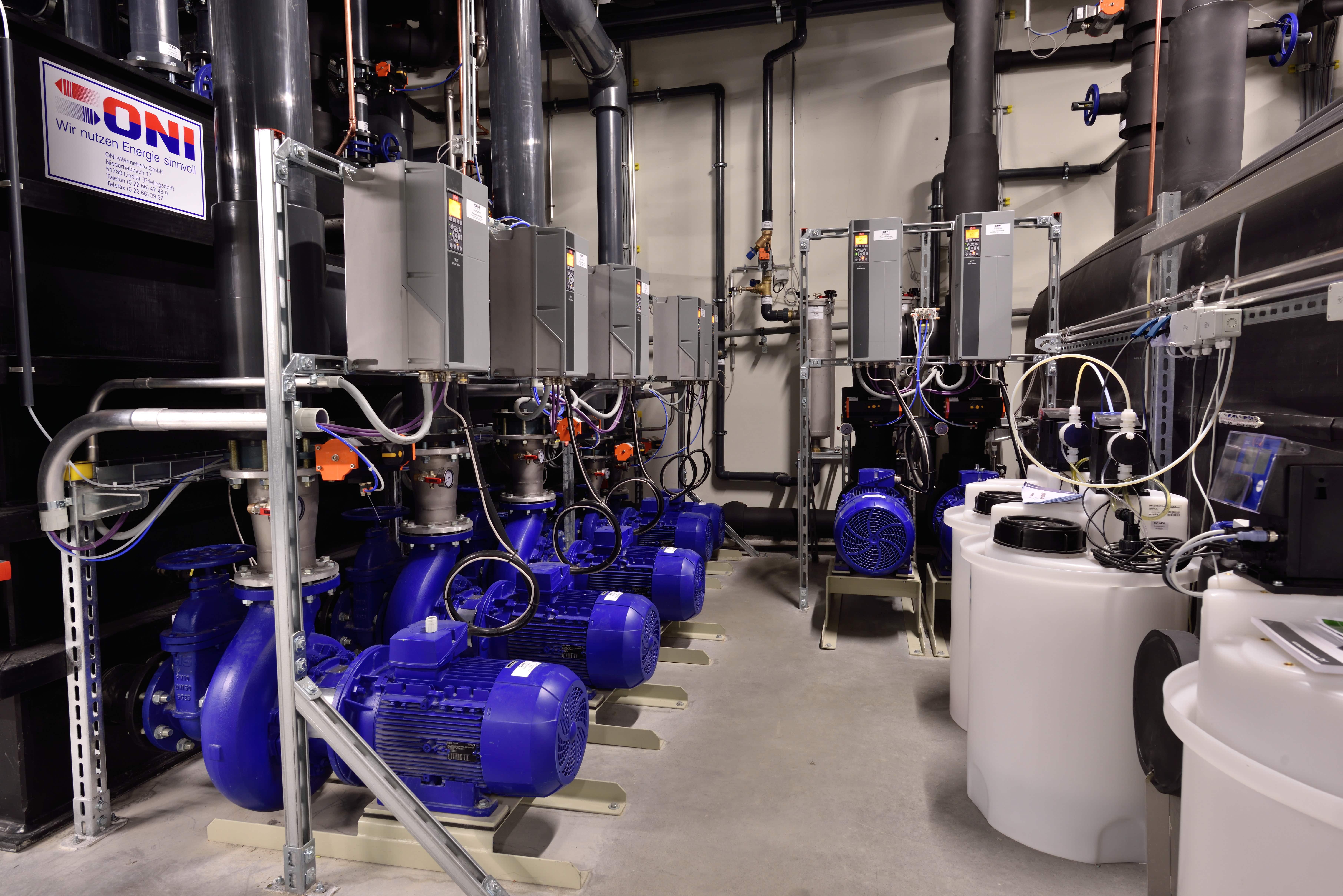
The ZKW Group with its main plant in Wieselburg, Austria, is one of the top addresses when it comes to highly efficient premium lighting systems, electrical and electronic modules for the automotive industry. For the construction of a new plant, special attention was paid to the optimally coordinated technical building equipment, thus creating the basis for the best possible use of the energy used.
The company's outstanding market position is due to its strengths in the areas of innovative strength, production know-how, flexibility, reliability and service. A key objective in the development of lighting systems is to improve efficiency both in terms of energy yield and luminosity. However, improving efficiency is also a continuously pursued goal throughout the Group. For years, an offensive energy-saving policy has been pursued in the energy supply sector. A current example of this is the construction of a new cover glass plant with logistics centre in the Haag industrial estate in Wieselburg.
Regardless of the lighting conditions, "seeing and being seen" is of existential importance in road traffic. For this reason, the performance of lighting systems in automotive engineering is continuously put to the test and challenges the inventive spirit of developers. In addition to technology, the appearance of these systems also plays an important role. Headlamp systems should therefore not only bring light into the darkness of the night, but also give the vehicle an attractive and dynamic face. The production of such complex and powerful lighting systems and their components requires a correspondingly highly qualified and safe production environment. In the energy and media supply sector, the areas of refrigeration technology, heating, compressed air and air-conditioning and ventilation technology are therefore particularly challenging. When designing and implementing the system technology, it is therefore important to ensure the highest possible efficiency, consistency and safety. "Together with the ONI experts, we have developed an integrated media supply concept that is tailored to the requirement profile of our production conditions. Understandably, the focus was on security of supply. As in our other plants, we also wanted to achieve the highest possible energy efficiency for the new plant in the Haag industrial estate, because energy costs are a significant burden for us. For this reason, we paid particular attention to optimally harmonizing the technical building equipment. We have thus created the basis for the best possible use of the energy used," says Günter Parb, the responsible facility manager, describing the objective set at the beginning of the project planning.
The key to efficiency is the system temperature
At the new ZKW plant in Wieselburg-Haag, the cover plates for premium headlamps are manufactured. The cover plates themselves are produced by injection moulding and then undergo complex post-treatment to obtain the properties required for roadworthy operation. Hydraulically driven Engel injection moulding machines with clamping forces ranging from 11,000 to 17,000 kilonewtons are used to produce the discs. The moulds and hydraulics of the machines are supplied via two separate cooling circuits with different temperatures.
This system separation was deliberately chosen because the company wanted to create the conditions to use the waste heat available free of charge for heating purposes and not simply dissipate it into the environment. "We know from the implementation of similar projects in other properties about the many advantages of this energy recovery. Especially in the transition and winter months, we do not only use the energy used twice, but also avoid the energy consumption for recooling via conventional recooling plants during these times," says Peter Teufel, the person responsible for plant operation, describing the advantages of the system technology.
In order to make the waste heat from the machine cooling circuit available to as wide a range of users as possible and at the same time enable networking with other waste heat sources at the highest possible level, the machines were equipped with so-called tropical coolers. These heat exchangers are capable of maintaining the temperature of the hydraulic oil at an optimum level when the temperature of the cooling water is spread from 42 to 37 degrees Celsius. The seven Kelvin higher temperature in the cooling circuit return circuit compared to normally equipped machines not only has the advantage that it can be used as a heating medium in a wide variety of applications, but also that the size of the useful heat exchanger surfaces can be considerably reduced. As a result, the investment costs for the heat recovery system are reduced. From the machine cooling alone, around 450 kilowatts of waste heat are available for feeding into the heating supply network.
An additional 210 kilowatts of waste heat are available for heating purposes from the compressed air generation, which was designed with corresponding oil coolers for heat recovery, and up to 1225 kilowatts from the cooling water generation for various company areas with a flow temperature of 17 degrees Celsius for heating purposes.
Process-optimised mould temperature control
High-quality moulded parts such as the headlight covers manufactured at ZKW, which must also have a stress-free, homogeneous material structure, require clearly defined production conditions in the area of injection moulding that must be maintained at a constant level. This is understandable when one considers that the best product innovations can only fully exploit their potential if the manufacturing process is also managed in such a way as to ensure process stability for the entire batch with the shortest possible cycle times and permanent process monitoring for production towards zero defects. In injection molding production, mould temperature control is therefore of decisive importance. Only an intelligent temperature management system that individually controls and monitors each individual mould temperature control circuit ensures that the unmistakable thermal structure in the moulded part to be produced is maintained. Determined by the highest quality requirements, ZKW therefore uses dynamically operating Rhytemper® multi-circuit temperature control systems instead of conventional temperature control systems.
By monitoring the energy balances and adjusting parameters such as temperature difference and volume flow in each individual temperature control circuit, it is ensured that the thermal fingerprint of the moulded part remains virtually constant. The use of Rhytemper® technology also reduces the effort required for the thermal running-in of the moulds from the outset because the thermal parameters of the moulded part are immediately available after the change of mould. If a mould change takes place and the preheating is completed, the optimum mould surface temperature is adjusted in the shortest possible time after production release and monitored with every shot. The necessary cooling circuit supply unit with measuring and control elements or the corresponding control unit is mounted in a space-saving manner in the immediate vicinity of the mould plate in order to keep hose paths as short as possible. On the cooling water side, a separate circuit supplies a temperature spread from 17 to 20 degrees Celsius. The recooling is carried out primarily via an almost free well water supply, for which no additional primary energy is required except for the electricity used for pump supply. Only in the case where the well bulk quantity is not sufficient
Little energy for a good climate
"For the various divisions of the company, especially in the production zones, the respective requirement profiles for the air conditioning conditions are clearly defined and ensured by suitable systems throughout the year. The spectrum ranges from simple ventilation to clean room technology at the highest level. The operation of these ventilation systems usually involves considerable energy costs. Together with the ONI experts, we have therefore already focused on the highest possible energy efficiency when developing the concept in order to bring the energy costs to a minimum level," says Peter Teufel, explaining the objective that has been set.
The air supply for the injection molding area is provided by three central zone units with an air capacity of 50,000 cubic meters per hour each. The units are each equipped with a heat exchanger unit for heating and cooling operation.
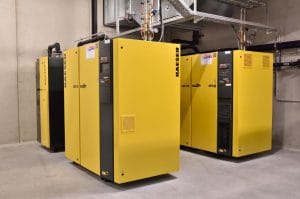
"We must take suitable measures to ensure 100 percent reliability with regard to the supply of media such as heating and cooling water, compressed air or conditioned room air. In this area, however, security of supply is closely followed by the demand for economically optimised energy efficiency. Even though the development of energy prices has taken a breather at the moment, we make sure that the highest possible energy efficiency is guaranteed for all the systems and systems we install, taking into account economic aspects. In this way, we want to ensure that our energy costs are kept at a minimum level in the long term. In the integrated plant concept implemented here at the site together with ONI, all possible savings potentials were used to achieve the set goal. This means that we are well equipped for the future at this location as well," said Günther Parb and Peter Teufel, who are responsible for the project.
